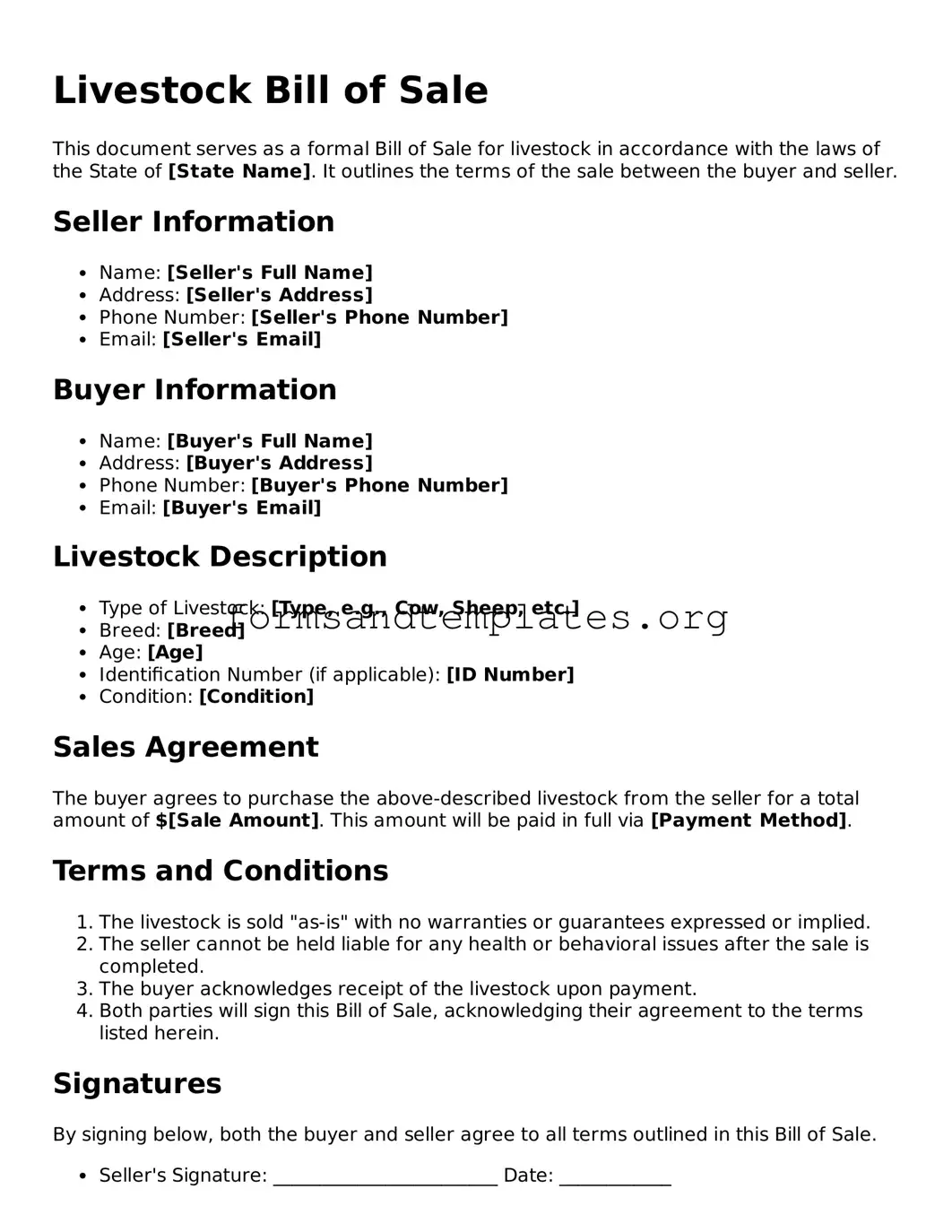What is a Livestock Bill of Sale?
A Livestock Bill of Sale is a legal document that records the transfer of ownership of livestock from one party to another. It serves as proof of the transaction and outlines essential details about the animals being sold, including their description, health status, and sale price.
Why do I need a Livestock Bill of Sale?
This document is important for several reasons:
-
It provides legal protection for both the buyer and seller.
-
It helps prevent disputes over ownership in the future.
-
It can be required for tax purposes or to comply with state regulations.
A comprehensive Livestock Bill of Sale should include the following details:
-
The names and addresses of the buyer and seller.
-
A detailed description of the livestock, including breed, age, and identification numbers.
-
The sale price and payment terms.
-
The date of the sale.
-
Any warranties or guarantees regarding the health of the livestock.
Is a Livestock Bill of Sale required by law?
While it may not be legally required in every state, having a Livestock Bill of Sale is highly recommended. Some states have specific regulations regarding livestock sales, and this document can help ensure compliance and protect your interests.
Can I create my own Livestock Bill of Sale?
Yes, you can create your own Livestock Bill of Sale. However, it is crucial to include all necessary information to ensure it is legally binding. Many templates are available online that can guide you in drafting a comprehensive document.
How do I sign the Livestock Bill of Sale?
Both the buyer and seller should sign the document to make it official. It is advisable to have the signatures witnessed or notarized, as this can add an extra layer of authenticity and protection in case of disputes.
What happens after the sale is completed?
Once the sale is completed and the Livestock Bill of Sale is signed, the buyer becomes the legal owner of the livestock. It is recommended that both parties keep a copy of the signed document for their records. This will be useful for future reference, especially in case of any issues that may arise.
Can I use a Livestock Bill of Sale for different types of livestock?
Yes, a Livestock Bill of Sale can be used for various types of livestock, including cattle, sheep, pigs, and goats. Just ensure that the specific details related to each type of animal are accurately described in the document.
